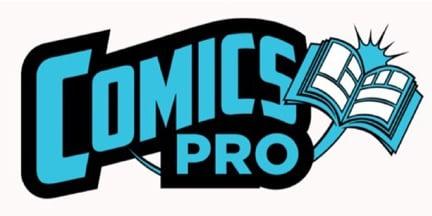If you click on a link and make a purchase we may receive a small commission. Read our editorial policy.
Inside Spider-Man’s ‘Brand New Day’: The bold creative gamble that reinvented the Marvel flagship character
Faced with falling sales and a fractured lineup, Marvel bet big on a radical idea — one book, three times a month, and a whole team of storytellers shaping Peter Parker’s world together.

Popverse's top stories
- The oral history of Marvel's Amazing Spider-Man 'Brand New Day' era [Marvel Matters]
- Here's how to watch all the New York Comic Con 2025 panels
- Watch Shang-Chi's Simu Liu and Meng'er Zhang basically prove they're siblings in real life at NYCC 2025
In 2008, Marvel Comics' Amazing Spider-Man took a big swing.
The long-running Marvel superhero title tried a new format, replacing its one writer/one artist system with a TV-style format, with a group of rotating writers and artists working together to produce a new issue each week. The rotating team of creators, known as the Brain Trust and later the Web-Heads, was made up of some of the best writers and artists in the industry, who each took turns crafting stories. Marvel also took the bold step of switching the title’s publishing schedule to at least three times a month - sometimes even more with specials and spinoffs. This new direction was called 'Brand New Day.'
This was done during a time when the comic industry was plagued with numerous delays (not to mention a nationwide recession). However, Amazing Spider-Man defied expectations and kept its thrice-monthly schedule during the entirety of the 'Brand New Day' era. Oh, and they also had the honor of publishing the highest-selling comic book of the decade (thanks to then US President Barack Obama).
Amazing Spider-Man's 'Brand New Day' era was more than a new direction; it was an experiment. It was an attempt to try a television-style approach - with a writer's room at the center of it - for a superhero title. The result was 101 memorable issues published from 2008 to 2010 (in addition to specials, miniseries, and spinoffs). While the 'Brand New Day' branding only appeared on the first few months of the publishing initiative, Marvel, its various creators, and the fans have come to refer to the entire three-times-a-month writers' room era as 'Brand New Day.'
This is the story of one of Spider-Man’s riskiest moves. This is the story of Brand New Day.
[Editor's note: This is an extended preview of our oral history of Marvel Comics' Spider-Man 'Brand New Day' era created for our members. Join now to read the full expansive piece, and show your support for more of this in the future.]
The day before Amazing Spider-Man's 'Brand New Day'

'Brand New Day' happened for a simple reason – sales. While Spidey’s main adventures were published in Amazing Spider-Man, readers made it clear that they wanted Spidey more than once a month. As a result, Marvel has published numerous Spider-Man spinoff titles over the years, including Spectacular Spider-Man, Web of Spider-Man, Peter Parker: Spider-Man, Spider-Man Unlimited, and numerous others.
In 2006, Spider-Man had three monthly titles: Amazing Spider-Man, Sensational Spider-Man, and Friendly Neighborhood Spider-Man. Tom Brevoort was serving as executive editor and overseeing the Spider-Man titles, and he began to wonder if there was a way to raise sales.
“My predecessor Axel Alonso was running the Spidey books, and there were three Spider-Man books at the time,” Tom Brevoort tells Popverse. “Amazing always sold the best of the three because Amazing was seen as the real book. The other two books sold better or worse, depending on who was doing them and what the story happened to be that month. But generally speaking, they sold a little bit less, or sometimes a lot less than Amazing Spider-Man. And so, at times, there was a lot of loose talk about the easiest thing to do would be just to make it Amazing Spider-Man all the time. And wow, suddenly you're selling better.”

“One of the first things I did was to go to editor-in-chief Joe Quesada and our publisher Dan Buckley, and say, 'I think we ought to do this three times a month Amazing Spider-Man idea. Rather than having three separate books, I think we should have one, and we should run it with a team and figure out how to do that, and that would be better.' This had been floating in the ether. Because I was going to have to do the hard part of figuring that out, they went along with the idea. On the most fundamental level, it was purely a mercenary idea. If I do three Amazings, that will bring in more revenue than doing an Amazing and a Sensational, and a Friendly Neighborhood."
To make this work, Brevoort needed an editor who could handle a high-profile title and the demanding publishing schedule. Marvel had been trying to poach Steve Wacker from DC Comics for some time, and the Amazing Spider-Man revamp seemed like the perfect opportunity. Wacker had recently served as editor on DC's 52, a weekly series that detailed the ‘missing year’ in the DC Universe between two events. The maxiseries shipped weekly for a year and had a team of multiple writers and artists. If anyone had a template for how to make Spider-Man’s new direction work, it would be Wacker.
“I had worked with Steve,” Brevoort says. “He had been the assistant editor on JLA/Avengers, the DC/Marvel crossover. I met him during that and found him to be pretty excellent. I had one or two unsuccessful attempts over the years of getting him to come over to Marvel. And in this case, the attempt was successful.”
“At the time, Steve was editing 52, DC's weekly book. The mechanics for 52 were very similar to what you were going to need to do a three times a month Spider-Man title," Brevoort continues. "52 had to come out four times a month, and you couldn't miss an issue, and you had to manage a big crew of people. And so, he seemed like somebody that had exactly the skill set that would be necessary to make this all work, and the practical experience with having done it.”
As Marvel began to assemble the new team for Amazing Spider-Man, Tom Brevoort wrote a document detailing his vision for Spider-Man’s new direction. The document, which became known internally as 'The Spider-Man Manifesto,' was later reprinted in The Amazing Spider-Man: Swing Shift Director’s Cut #1 after 'Brand New Day' had begun. The essay is a fascinating behind-the-scenes document that explores how Marvel viewed Spider-Man at the time, and what needed to be done to ‘fix’ the character.

In addition to switching to a new publishing format, Brevoort wanted to use the new direction to give Spider-Man a back-to-basics approach. The new era would be coming off the heels of One More Day, a major turning point for the character (more on that later). In 'The Spider-Man Manifesto,' Brevoort writes how Spidey had moved away from what makes him work as a character, and how it can be fixed. For example, Spider-Man is about Peter Parker and his struggle to balance his double life, while maintaining the soap opera of his personal life.
Brevoort also wrote that Spider-Man’s villains had become watered-down versions of who they once were, and they needed to be rebranded with new purpose and motivation. The document also suggested some storylines that never came to pass, such as Mary Jane returning to New York with a new fiancé and Peter falling into bed with Betty Brant.
“As with most of those documents, none of it was absolute,” Brevoort says. “There was a lot of flexibility in a bunch of it. The document is not intended to be law. The document is intended to be a vector and a starting point. The best idea wins, and things change over time. It was really about setting the table more than anything else.”
Read the full Oral History of Marvel Comics' Amazing Spider-Man 'Brand New Day' era here.
Marvel's most reliable superhero has proven he can do a whole lot more than just 'whatever a spider can.' Swing into Spidey's history with Popverse's...
Just watch out for that radioactive blood.
Follow Popverse for upcoming event coverage and news
Find out how we conduct our review by reading our review policy
Let Popverse be your tour guide through the wilderness of pop culture
Sign in and let us help you find your new favorite thing.
















Comments
Want to join the discussion? Please activate your account first.
Visit Reedpop ID if you need to resend the confirmation email.